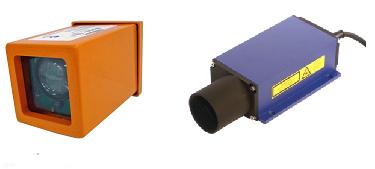
MultiLaser ML5760系列鐳射料位元計
APPLICATIONS
Measurement of distance is fundamental to hundreds of industrial, defense, and consumer needs. Of course, the measurement of level is a distance measurement.
With ranges extended up to a mile or more or as short as small fractions of an inch, they typically find applications in such disparate fields as collision avoidance systems, military target ranging, tanker car load-out, truck positioning, robotics, laser measuring tapes and industrial level control.
COMBINE's expertise and emphasis is level measurement, however, we can and do address a wide range of laser applications.
To accurately measure distance, the time required for light to make a round trip between the measuring device and the object is measured. COMBINE offers two different laser measurement methods.
The right choice for your application is dependent upon a variety of parameters.
Time of Flight Approach
Key Features of a Pulsed Laser Sensor
Principles:
 Time-of-flight method Time-of-flight method  Near-infrared wavelength Near-infrared wavelength  Pulsed diode laser transmitter Pulsed diode laser transmitter  Sensitive narrow-band optical receiver Sensitive narrow-band optical receiver  Single pulse or multiple pulse signal detection Single pulse or multiple pulse signal detection  Microprocessor-based post-processing and interfacing Microprocessor-based post-processing and interfacing  As far as appropriate: opto-mechanical scanning mechanism As far as appropriate: opto-mechanical scanning mechanism
Advantages
 Small size Small size  High reliability High reliability  High interference immunity High interference immunity  High accuracy High accuracy  Long range Long range  Quick data acquisition Quick data acquisition  Highly collimated measuring beam Highly collimated measuring beam  Excellent cost / performance ratio Excellent cost / performance ratio Trade-Off:
Reduction of the maximum range due to:
 Very bright daylight Very bright daylight  Bad visibility Bad visibility  Dirty or dusty front lenses Dirty or dusty front lenses Two standard units available from COMBINE are
MultiLaser M403 MultiLaser M403-GF
The simplest, conceptually, is the time-of-flight approach that measures the elapsed time between when a short pulse of light leaves the instrument and when the returning reflected or scattered pulse is detected.
Phase Modulation Approach (hand-held)
Conceptually more complex, but electronically simpler, is to measure the phase of a modulated light beam when it leaves the instrument, and then compare that phase to the phase of the return light.
PRINCIPLES OF OPERATION
There are three physical properties of laser light that can be exploited in the measurement of distance:
Light travels in a straight line.
This property makes feasible a variety of possible geometric methods for measuring distance, most of which depend on some form of triangulation. These methods are limited in that they require at least two spatially separate reference points.
Laser light is coherent.
The use of diffraction (destructive and constructive interference) of the light is an excellent method for measuring very short distances (inches or less) with sub-micron accuracy. The technique, however, is not easily usable for greater distances.
Light propagates through space with a very well-known velocity.
In principle, this offers an extremely accurate way to determine distances of any required length. It is technically difficult, though, to accurately time the departure/return of a light pulse traveling ~ 1 ft/ns. Resolution of 1/8 in., e.g., requires a temporal accuracy of ~ 10 ps.
|